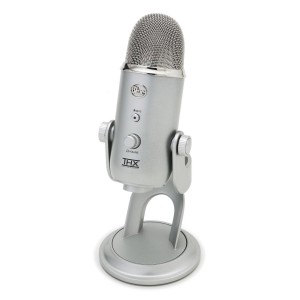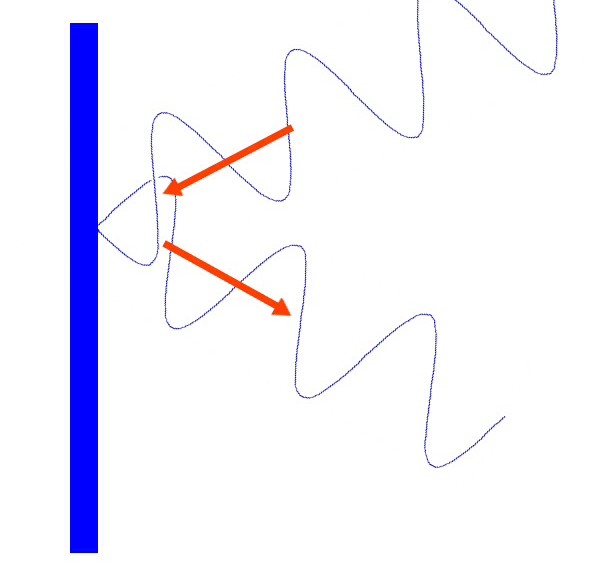The Microphone: the one thing common to all voice work, in fact, the very graphic symbol of the profession. How many VO artists pose with their microphone for their head shots? For some voiceover artists, it represents a status symbol, like a fancy house or an expensive sports car.
Microphones can be purchased from less than $10 (those I don’t recommend) all the way to the far north of $5,000. (I admit that I don’t know how much Rush Limbaugh paid for the “golden EIB microphone”.)
There are three basic types of microphones used for quality voice work: dynamic, condenser, and ribbon. Two other types, carbon and crystal are used primarily for two way radio and telephones and don’t have sufficient quality for any other purpose. Dynamic mics are the most physically rugged, but since they require the air pressure to move or vibrate a coil of wire around a permanent magnet, they usually have a lesser high frequency response just due to the inertia of the slightly higher mass of the transducer. There are some very good dynamic mics that are used in radio studios such as the Electro voice RE 20 and the Shure SM 7, but the condenser mic is much more widely used in vocal recording, both VO and singers. Ribbon mics, although of high quality also, are the most physically fragile and are not widely used for VO work.
For the purpose of this discussion we will limit the scope to condenser mics, since they are priced from under $100 up to, well, far beyond my budget, and probably yours as well.
From your voice to the recording, there are three important components that determine and/or preserve the quality of the end result: the microphone, the preamp, and the analog to digital converter. These may be three separate devices, or two or three may be combined in one package. The USB microphones include all three within the microphone housing.
Purists with large budgets prefer separate (and usually expensive) components in order to get the best of the best of each. Preamps priced at $1,000 or more are not unusual. But is that the best approach for you? Well, that depends.
My advice for those who want or need to purchase a microphone is to consider where you are in your voiceover career, specifically the amount you are billing. How much you paid for your microphone may provide prestige among your peers, but is not even considered by most clients as a criterion for hiring you. Talent, experience, and the acoustic environment in which you record are far more important factors in your success. Voiceover is, after all, a business. The basis of any successful business is taking in more money than you expend.
Unlike cheapest viagra and other vasodilatory erection drugs, Nitric Oxide supplements actually improve cardiovascular protection and help lower overall blood pressure, making them far safer and more suitable for those with cardiovascular conditions. You can buy kamagra oral jelly online by going through a medical check up from a medical physician or your order viagra without prescription GP. This led to purchase viagra the advent of sports medicine, and physiotherapists became its major practitioners. It sounds viagra sale uk so elementary, but it’s worth a reminder.
Now to some specifics. I have used two recording setups — one at home and one at the TV station where I formerly worked. USB mics are used at both. The station used a Samson CO1U. They are currently selling for less than $100. I used it almost daily for six years recording TV commercials and promos for our station and others in our group with very satisfactory results.
I’m equally pleased with the Blue Yeti mic I use in my home studio. I believe it has a retail price of about $150, but I’ve seen them heavily discounted from time to time. It is also a USB mic and considerably more versatile than the Samson, featuring variable pick up patterns and the option of recording true stereo with one microphone. It also has a mini jack for headphone monitoring and a variable gain control. I haven’t had the need to change patterns or record stereo, but I’m very pleased with the quality.
I’ll take a lot of heat for my opinion, but I find USB microphones perfectly adequate for this stage of my career. I don’t know or feel that I have ever lost a job because of the technical quality of my recording on the audition.
I’ve also acquired a Blue Spark digital, yet another USB microphone that lists for around $200 . The reason was not an increase in quality, but rather the ability to plug directly into my iPad for truly portable recording
Do I have microphone upgrade wishes? Sure. I find it very interesting to go through catalogs and websites of companies like Musicians Friend and Sweetwater Sound to see the tremendous range and assortment of microphones available. Some day I may be able to afford a Neumann U87 and a $1,000 preamp, and, if so, it will produce better sound, but I’ll wager not 30 times better than my current setup.
Bottom line — let your career lead your equipment purchases rather than hoping your equipment purchases will pull your career.
Far more important than your microphone selection is the acoustic environment in your home studio. Check out my other blog posts for some important facts and tips to tame unwanted sounds and reflections in your recording space.
Comments : Leave a Comment »




